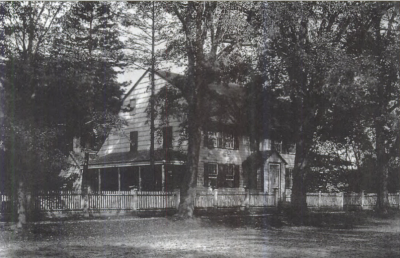The Mast-Head: Old News About Ticks
The Mast-Head: Old News About Ticks
A close friend called on Tuesday to say he had been in the hospital emergency room overnight for treatment for an allergic reaction to meat.
Time was no one much knew about the now-dreaded alpha-gal allergy, much less that it was brought on by the bite of the lone star tick. As far I know, I was patient zero, at least in the New York area. My first attack came in about 1991, a couple of hours after eating pepperoni pizza while helping to install an interactive exhibit for children at the South Street Seaport Museum.
One thing about anaphylactic shock is that it makes you very dumb. At least that happened to me. After the pepperoni stepped up and kicked me, I walked to a pharmacy, took a fistful of mind-numbing antihistamines, and got in my truck, headed for the Long Island Expressway. To this day, I can’t pass a certain stretch of houses on the service road at about Exit 21 without flinching. I will spare you about what was along the side of the road before I fell asleep in the front seat. As I said, it makes you dumb.
After a few more attacks, I found a well-recommended allergist in Manhattan. It took several rounds of tests and a detailed food diary before the meat allergy became clear; she had never seen it in any of her patients. I even got on some national network or other’s morning show, in a segment about people with weird allergies.
These days, alpha gal is old news. Pretty much every restaurant server here knows about it. This is a relief because for years I had the suspicion that I was being seen as a food nut when I asked that extra care be taken with what I was about to be served.
Probably my worst allergic reaction came when I was a co-moderator for a debate between Representative Tim Bishop and Lee Zeldin at Westhampton Beach High School. Joe Shaw, the Southampton Press editor, and I had met for dinner earlier that night at Starr Boggs; I had the fish. Thing was, the brownish sauce my fillet was swimming in was made with meat stock.
About halfway through the debate I felt a telltale itching at the back of my head. Then my lips started to tingle. As the closing statements began, I leaned over to Joe and whispered that I had a, uh, medical situation and would have to run out the minute they ended.
All was good as I darted up the aisle and asked a cop through thickening lips if there was a 24-hour pharmacy nearby. He gave me directions, and I took one step toward the parking lot. Suddenly, Mr. Bishop blocked my path, looking to make one final point. I stood there wondering what to do. At last, he was done.
A couple of antihistamines later, I was headed home in the truck. “What else could I do?” I thought. I was lucky to have made it home. Like I said, it makes you dumb.
By the way, the last time I wrote about ticks, the good people at Stony Brook Southampton Hospital sent over a nice tick kit with an identification card, tweezers, a magnifying glass, and alcohol swabs, as well as advice about how to remove the little terrors. The kits are available at programs run by the hospital’s tick-borne disease resource center and can be requested at 631-726-TICK. They are worth having on hand.

